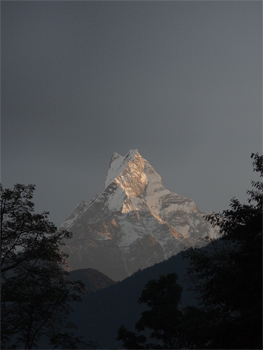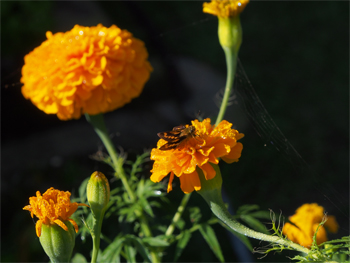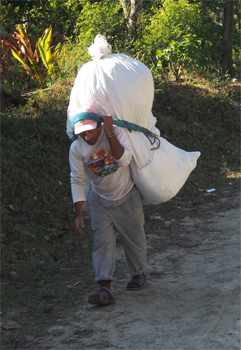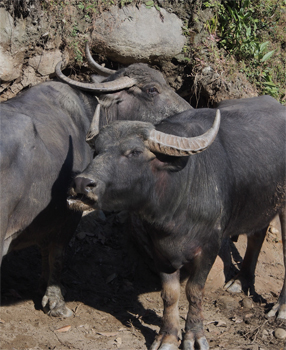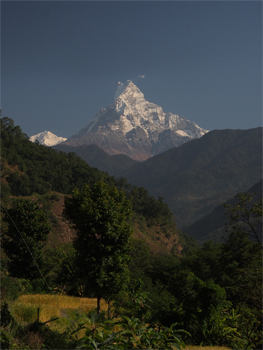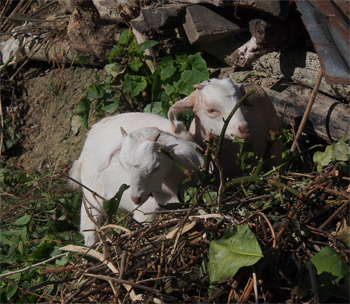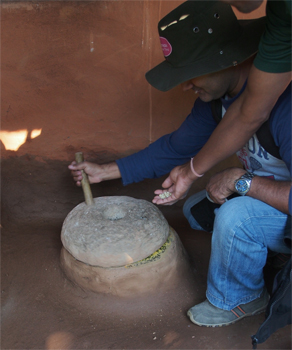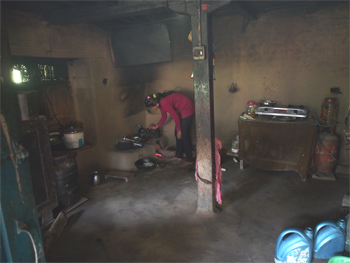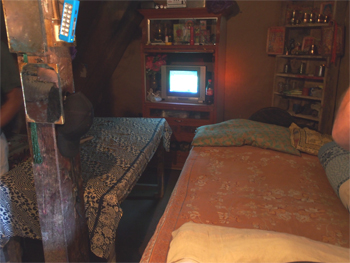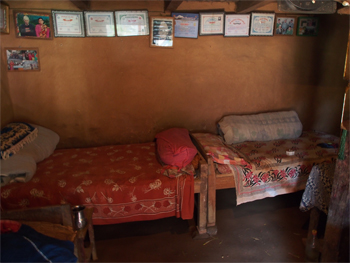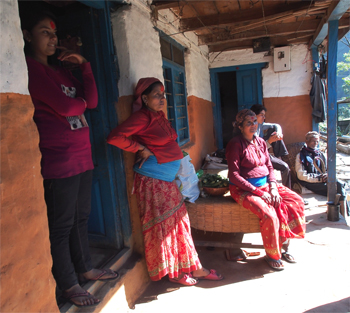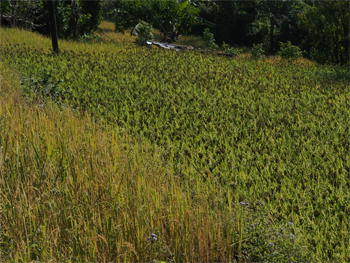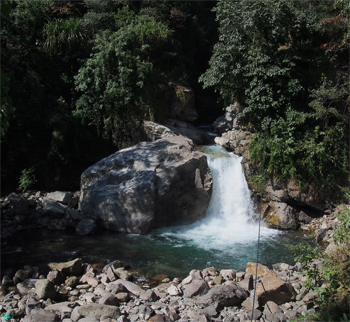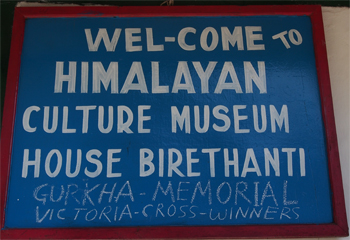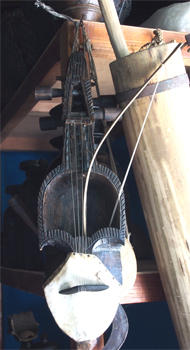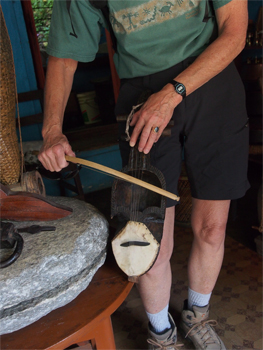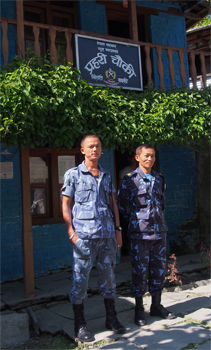Mon., 10/29/12 - Birethanti Area Trekking
At 7 AM the staff knocked on our door and served us coffee, tea, or hot chocolate - nice wake up call! At 7:30 we ate breakfast - Muesli, hard-boiled egg, chicken sausage, potatoes, and toast.
Sunrise on Macchapucchre or Fishtail Mountain
|
|
Insect on a marigold
|
At 8:30 we started a four-hour trek in the Birethanti area- a walk around the villages in this area. We stopped to see some millet being ground by a diesel-powered machine. Then we stopped at the house of an elder, like a mayor, and visited their sleeping room - four beds, a Hindu altar, and a TV run by solar power. We looked into the kitchen with its cement/wood fireplace/oven in one corner, shelves with metal plates, bowls, and pitchers and not much else. Padam, our local guide, showed us a grain grinding stone and a basket they can wear to work in the fields during the monsoon season. All the houses are full of extended family. They farm everything by hand- rice, millet, coffee, papaya, tomatoes (under a plastic greenhouse) spinach, cauliflower, etc. They also grow jasmine and sip jasmine water each morning because it is sacred to Vishnu. It is part of their morning ritual.
|
Nearby waterfall
|
Drying corn |
Load coming |
and going
|
Water buffalo - used for plowing and other farm chores
|
Macchapucchre or Fishtail Mountain |
Hungry goats
|
Diesel-powered grinder - grinding millet
|
Much grinding is done by hand
|
Farmhouse kitchen |
Farmhouse bedroom |
Everyone sleeps in the same room
|
Watching the tourists go by
|
We continued our walk along the Annapurna Trekking path which was originally a salt route to bring salt down from Tibet. Rice was traded for the salt. We stopped at a school where some British college kids were volunteering for a week to help with any work that needed to be done - they didn't have a clue about doing any form of manual labor. We went to the Rhino Waterfall on the Brungdi River. In the monsoons the Rhino Rock is covered by the water flow.
|
School sign |
Tents for the volunteers
|
Rice on the left and millet on the right - the two main crops in the area |
Shrine for both Buddhists and Hindus - covering all the bases before setting off on a trek
|
Rhino waterfall
|
Trail through the village |
We went back to the center of the village and sat in a museum run by a Nepali retired from the British Army. He has collected examples of many of the devices used in this area in the past. Padam and Manoj described how the items were used. They explained how honey is collected from cliff faces using bamboo rope ladders, smoke pots, long poles, and collection baskets. We saw an old Sarangi, which is like a violin. Before TV and cassette players, a person could stroll around a village and play music for entertainment. The instrument is quite intricate. |
|
|
Sarangi - traditional Nepalese folk instrument
|
Gale trying out the Sarangi
|
Local police officers |
Return to Top Return to Nepal Itinerary Return to Dreamcatcher Home Page
